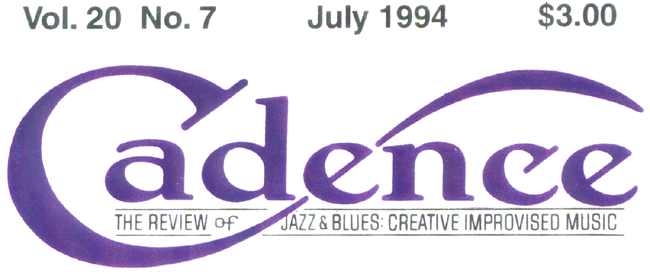
Presse Internationale -- U.S.A.

juillet 1994
Volume 20 N°7
Reviews
Nelly Pouget
" Le Vivre "
[...]
Although (3) is only Pouget's second recording (5/ 92, p.100), evidence of a remarkable talent is at hand. As a saxophonist, she presents strong control of percussive and melodic elements. Though her tone is a little nasal, she plays tenor with a mighty attack and well thought-out statements evocative sometimes of Archie Shepp. The band she has assembled for this date fairly blaze, as one might expect of key musicians from the French/Europen scene in concert with a few of America's long-dedicated hard cores.
The record comprises nine curiously constructed originals-tunes with highly inventive, multi-layered parts running sometimes at right angles to each other. While the arrangements work more often than not, there are moments when rhythm and lead sections seem to be working at cross-purposes. However, this is not necessarily a bad thing, but rather part of Pouget's vision of orchestrated dissonance. She is able to take highly ar ranged structures and superimpose total improvisatory freedom without losing sight of the whole.
As far as players go, all involved perform with great discipline and sympathy for Pouget's unusual compositions. Tapscoft, Carter, and Cyrille create a rhythmic bottom line that exists in a more or less continual state of contained internal combustion. Tapscott runs furiously, then hides, then darts out from behind unexpected trees. Unlike several of his European co-players here, Tapscott's somewhat angry playing carries the cultural weight of Watts, his home turf. Godard and Jenny-Clark, if slightly lacking in conviction, compensate with what seems greater sensitivity to Pouget's leads. For me, some of the highest passages are the Cyrille/Siracusa percussion duets. Like Cyrille's intense duets with Vladimir Tarasov, these two throw out all preconceptions of how much music two drummers can make.
Scot Hacker